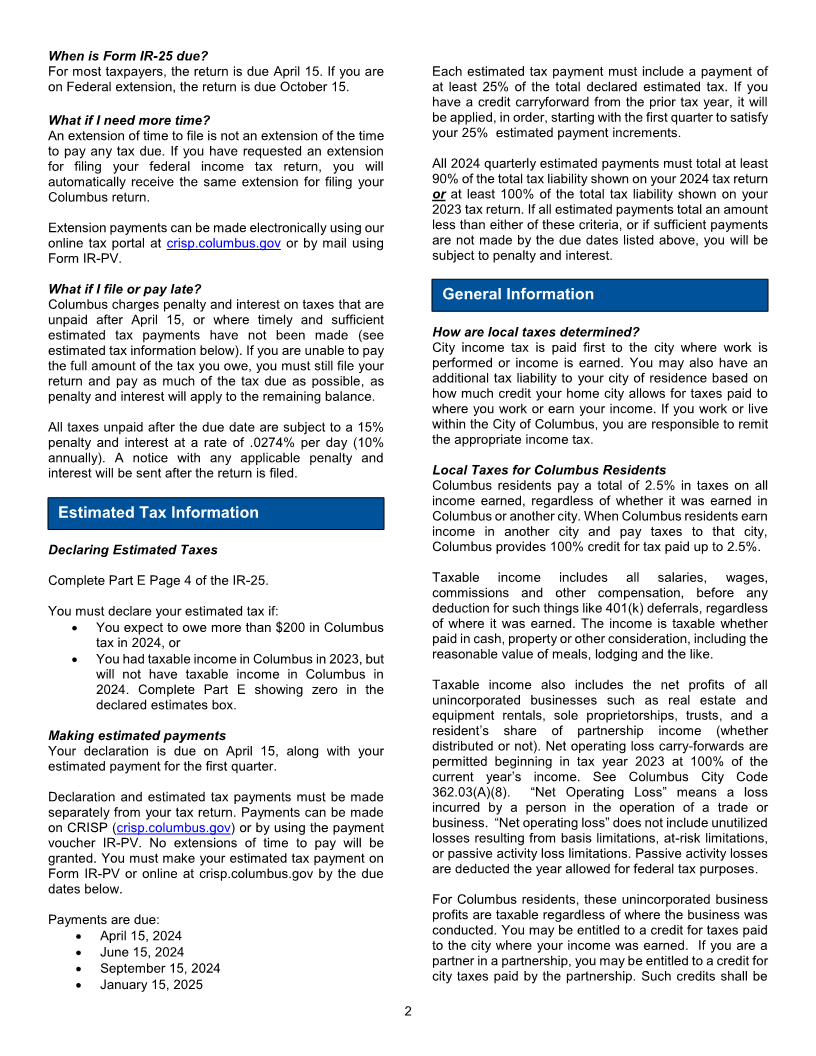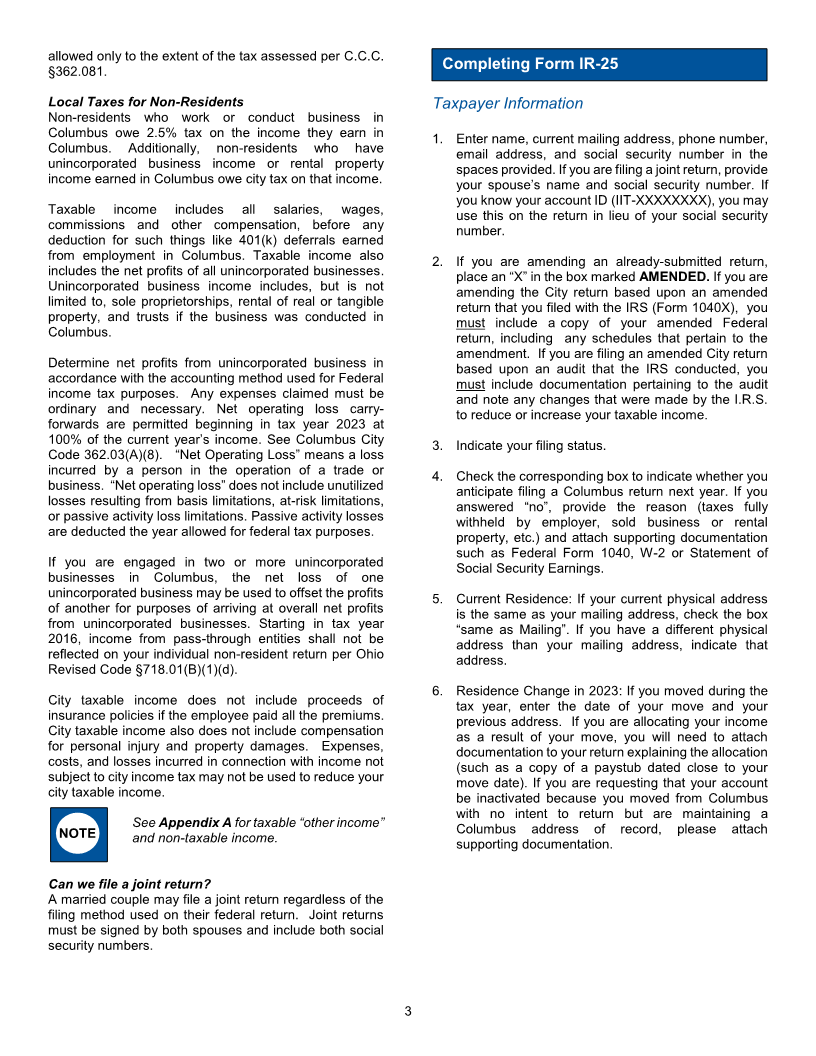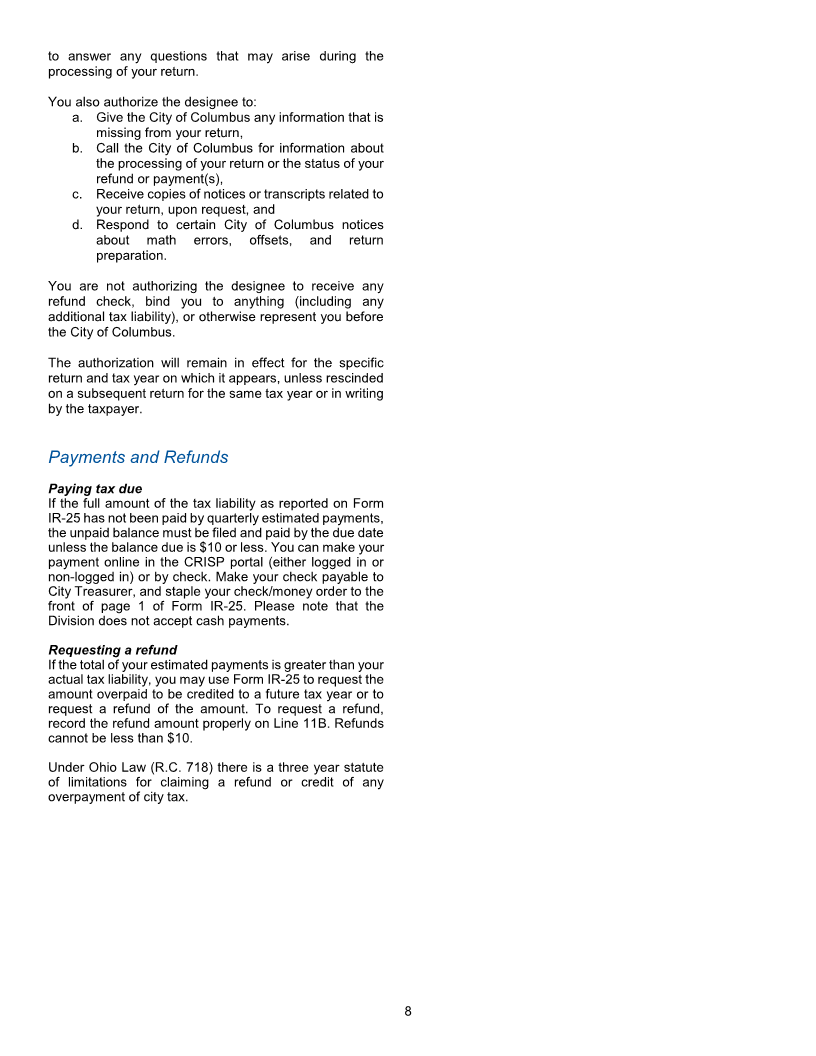
Enlarge image
Do I Need to File?
Instructions for
You are generally only required to file if any of the
Form IR-25 following apply:
1. You live in Columbus and earn income that requires
Columbus Individual Return you to file a Federal Schedule C, E, or F. You must
file a city return even if your Federal Schedule C, E,
Use to prepare returns for tax year
2023 or F shows a loss.
2. You do not live in Columbus, but any portion of your
The Columbus tax rate is schedule C, E (rental income only), or F income was
2.5%
earned in Columbus. You must file a city return even
Table of Contents if your Federal Schedule C, E (rental income only), or
F shows a loss.
What’s New?........................................................ 1 3. You live in Columbus, work in a city with a tax rate
Do I Need to File?................................................. 1 lower than 2.5%, and are not properly withheld at
How do I File?...................................................... 1 2.5% in total.
Estimated Tax Information….……...………..…… 2 4. You earned wage income in Columbus but 2.5%
General Information……………………………….. 2 wasn’t fully withheld. To check, multiply your largest
Completing Form IR-25 wage figure shown on your W-2 by 2.5%. Your
Taxpayer Information 3 withholding is correct if box 19 on your W-2 matches
Part A 4 that amount and was withheld to Columbus.
Part B 4 5. A final return is required to inactivate a tax account if
Part C 5 you are no longer required to file.
Part D 5
Part E 7
Schedule Y 7 How Do I File?
Finishing and Filing Your Return
Payments and Refunds 8
Appendix A: Taxable and Non-Taxable Income… 9 Can I file Form IR-25 online?
Yes, and we strongly recommend you file with our new
online tax portal, CRISP at crisp.columbus.gov.
What’s New?
Should I file an individual return?
We strongly recommend you file with our new You should use Form IR-25 if you met the previous
Columbus Revenue Information Service Portal criteria under “Do I Need to File” above.
(CRISP) at crisp.columbus.gov. On CRISP, you
can electronically complete your Form IR-25 and This includes filing an IR-25 if your federal return includes
upload copies of your W-2s or other income from the following:
documentation.
1. Sole proprietorships – Schedule C, Federal Form
Part E of the IR-25 replaces Form IR-21 1040.
Declaration of Estimated Tax. Form IR-PV 2. Rental property - Schedule E, Federal Form 1040.
replaces Form IR-18. 3. Partnerships, Joint Ventures and other types of
associations.
Net Operating Loss: For taxable years beginning a. These businesses file their own returns using
in 2023 or thereafter, a person may deduct, for Form BR- 25; however, if you are a Columbus
purposes of an income tax levied by a municipal resident who is a partner, you must report
corporation that levies an income tax before your share of the taxable income on your
January 1, 2016, the full amount allowed by individual return.
Columbus City Code 362.03(A)(8). 4. Farm Net Income - Schedule F, Federal Form 1040
or Form 4835.
Corporations, including S-corporations, partnerships, joint
ventures, and fiduciaries (estates and trusts), must file
using Form BR-25.







